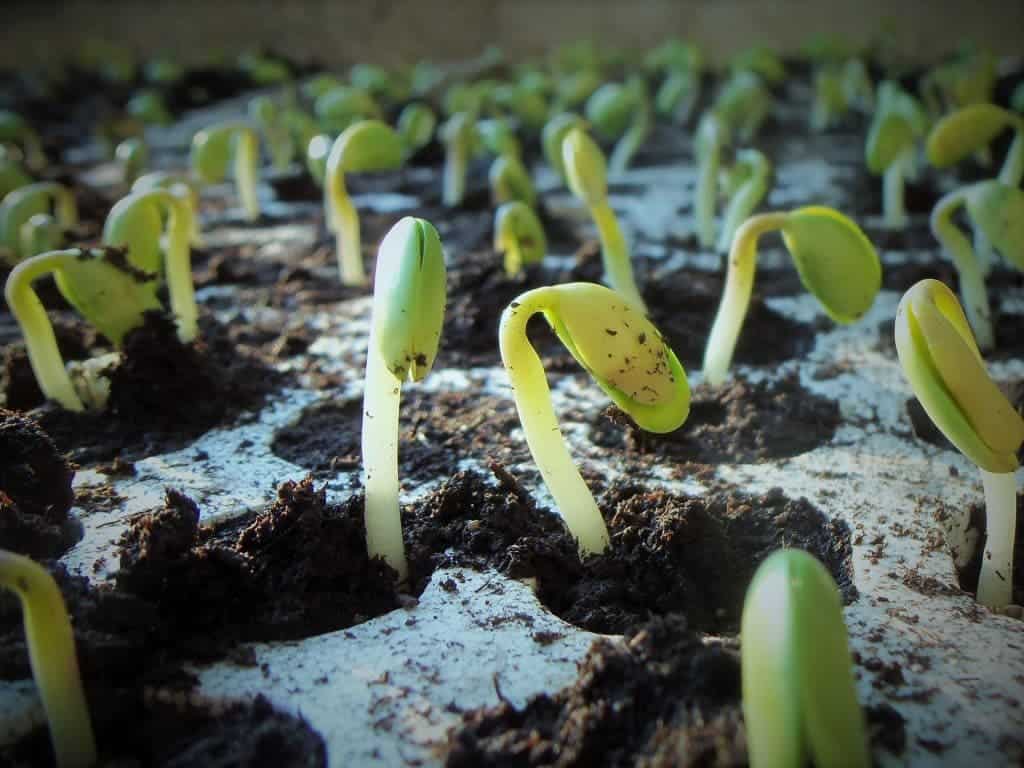Could your typical US household grow enough proteins for its own needs in the backyard? Researchers say ‘yes’.

Despite — or rather, due to — everything that’s been going on since last year, people in the US have taken to their gardens in a big way. Equipment and supplies ranging from garden seeds to coops and rabbit cages were highly sought-after in 2020, and they’ve been flying off the shelves.
This gives us a chance to analyze the potential that individual households have of growing protein — and, according to research at Michigan Technological University and the University of Alaska Fairbanks, even a backyard is enough for this purpose. Dedicating just part of it to growing soybeans, chickens, or rabbits can fulfil the typical family’s demand for protein, they explain.
Backyard Barbeque
As a response to the shortages experienced during the early days of the pandemic, some people turned to in-house production. Chickens were particularly popular, since they’re quite cute, easy to care for, and also lay eggs. I’ve even made a short primer on how to care for them here.
On average, according to the National Institutes of Health (NIH) Dietary Reference Intakes (DRI), your average person needs 51 grams of protein every day, which comes to 18,615 grams each year. Your average household, then, needs around 48,400 grams to make it through the year. We tend to get these from huge factory farms, since most people today don’t have the space to grow their own food, and we’d balk at having our cities full of livestock like our forefathers.
However, the researchers point out that small animals are much more efficient as a source of proteins than large ones, and they’re allowed within city limits. Furthermore, while lots of people don’t have extra room, the average backyard in the US ranges from 800 to 1,000 square meters, or about 8,600 to 10,700 square feet.
“You don’t have to convert your entire backyard into a soybean farm. A little goes a long way,” said Joshua Pearce, one of the study co-authors and Michigan Tech’s Richard Witte Endowed Professor of Materials Science and Engineering and professor of electrical and computer engineering.
“I’m a solar engineer; I look at surface area and think of photovoltaic production. Many people don’t do that — they don’t treat their backyards as a resource. In fact, they can be a time and money sink that they have to mow and pour fertilizer on. But we can actually be very self-reliant when we treat our yards as an asset.”
Pearce’s co-authors initially banded together to perform an agrovoltaics study on the practicality of raising rabbits under solar panels. However, when they went out to buy cages in 2020, they found wide-ranging shortages all through the US. They then refocused their work to address the impacts of the pandemic, like a lot of other researchers. What they looked at is how backyards can help insulate families from shortages of essential goods, like food.
Using the average backyard as a measuring stick, a typical family could produce up to 50% of their protein requirement themselves, assuming these would be used as space to raise chickens or rabbits. To fully cover their own demand, a family would need to raise and care for 52 chickens or 107 rabbits, which wouldn’t be exactly easy (or legal, depending on where you live). According to the team, the “real winner is soy”.
Consuming plant protein directly is way more efficient compared to feeding it to animals. Such protein can provide 80% to 160% of household demand, the team explains.
Whether or not you’ll be saving money on this depends on exactly how you go about it, but it is possible even if food prices don’t increase, according to the authors. But how much you value your time, your effort and your enjoyment from tending to your crops, and how much importance you place on food quality will all impact how much you’d gain from a backyard farm.
“It does take time. And if you have the time, it’s a good investment,” Pearce said, pointing to other research on building community with gardens, mental health benefits of being outside, and simply a deeper appreciation for home-raised food. “Our study showed that many Americans could participate in distributed food production and help make the U.S. not only more sustainable, but more resilient to supply chain disruptions.”
The paper “U.S. Potential of Sustainable Backyard Distributed Animal and Plant Protein Production during and after Pandemics” has been published in the journal Sustainability.









